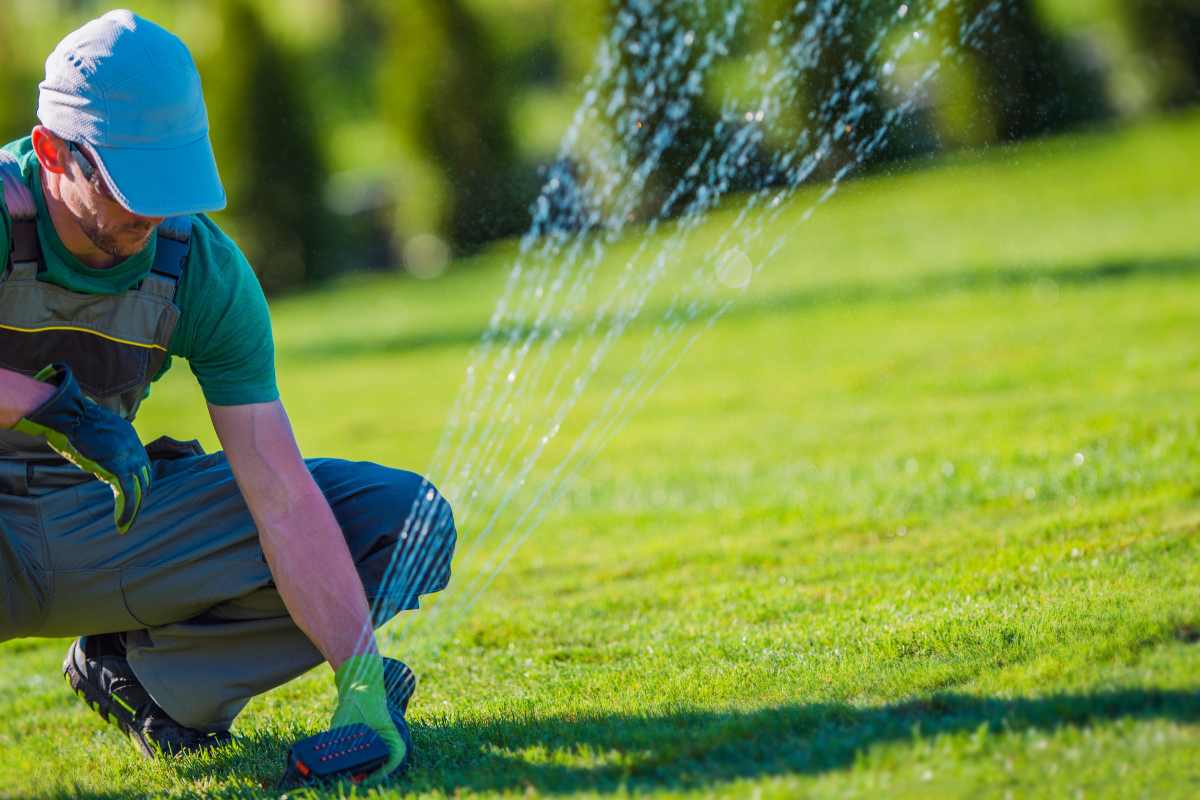
Unlike a tax audit, this type of audit is one you don’t need to be afraid of, even if there’s a high chance you’ll get soaked. Regularly performing a lawn sprinkler audit is one of the best home investments in your irrigation system so your lawn stays lush and your water bills stay low.
Just like we routinely take ourselves to the doctor for a check-up, you want to ensure your sprinkler system gets a once-over periodically, too.
Purpose of a Lawn Sprinkler Audit
A lawn sprinkler audit, also known as a sprinkler system audit or irrigation audit, is a process of evaluating and assessing the efficiency and effectiveness of a lawn irrigation system.
The main goal of an audit is to ensure water is being applied most efficiently while minimizing waste. An audit also ensures you aren’t underwatering or over-watering your grass. Instead, it’s getting the amount of water it needs for optimal growth.
According to the U.S. Environmental Protection Agency, “Nationwide, landscape irrigation is estimated to account for nearly one-third of all residential water use, totaling nearly 9 billion gallons per day.” The downside, though, is that according to Water Sense, an EPA partnership program, as much as 50 percent of that irrigation may be going to waste due to inefficient or improper watering by homeowners.
When to Audit Your Sprinklers
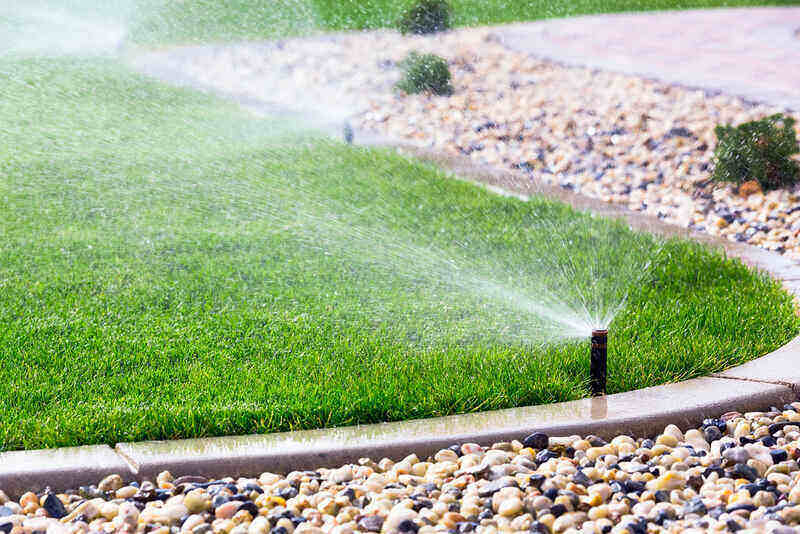
Ideally, you want your sprinkler system to work well every time it runs during the season so you can perform an audit whenever the weather permits. It’s recommended, though, that early spring is optimal if you only plan to do a single audit each year. This time is perfect since it comes just as your lawn is starting to grow for the season.
What part of the day is best to water? Early morning is best. The sun isn’t yet at its peak, so you won’t lose much water to evaporation, and water pressures are high.
Things to Consider Before a Sprinkler System Audit
There is more to a lawn irrigation audit than checking hoses and sprinkler heads for leaks. First, experts advise you to take a step back and determine your watering needs and what factors impact those needs. Understanding these things will help you figure out precisely how long and how often you should water.

What is Your Soil Type?
There are three main classifications of soil particles — sand, silt, and clay — based on size. These particles blend together to make 12 different soil types or textures: sand, loamy sand, sandy loam, sandy clay loam, loam, silt loam, silt, silty clay loam, clay loam, silty clay, sandy clay, and clay.
The different soil textures have different watering requirements related to their predominant soil particle type:
- Sandy soils need frequent watering because they don’t retain water well. The water seeps in rapidly but also passes through the soil quickly. So, water more frequently, but for shorter periods.
- Silt and loamy soils lie between sandy and clay soils in their absorption rate and moisture retention. Therefore, take a course of action in the middle — water at a moderate rate for a moderate length of time.
- Clay soils require less watering because they hold the most water. Since water seeps slowly into clay soils, water at low rates over a more extended period and less often.
Pro Tip: For soils with a mix of particle sizes (e.g., sandy clay loam), you may have to water them and gauge how they absorb and retain water. Then adjust your watering rate and frequency accordingly.
What is Your Grass Type?
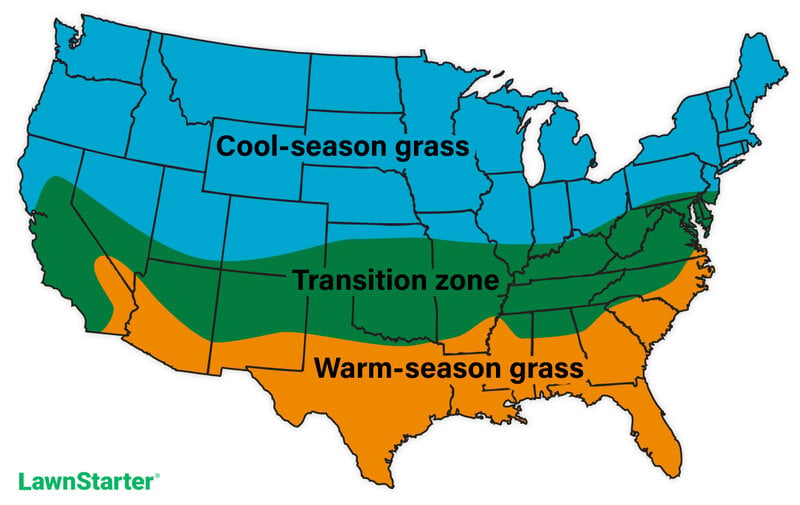
How much water your lawn needs ultimately depends on the grass you’re growing. Grasses vary significantly in their water requirements and also their drought tolerance. On average, warm-season grasses require less water and have better drought tolerance than cool-season grasses.
Therefore, it’s essential to know what turfgrass you’re growing to give it the right amount of water. If you don’t know what kind of grass you have, a general rule of thumb with lawn watering is to give it 1 inch of water weekly.
Watering Requirements for Warm-Season Grasses
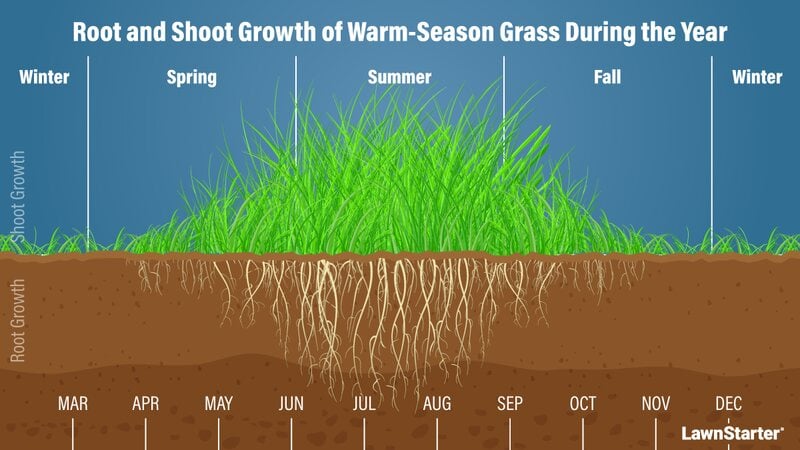
- Bahiagrass: 1 inch per week
- Bermudagrass: 1 inch per week
- Centipedegrass: 1 inch per week
- St. Augustine: 1.25 inches per week
- Zoysiagrass: 0.75 inches per week
Watering Requirements for Cool-Season Grasses
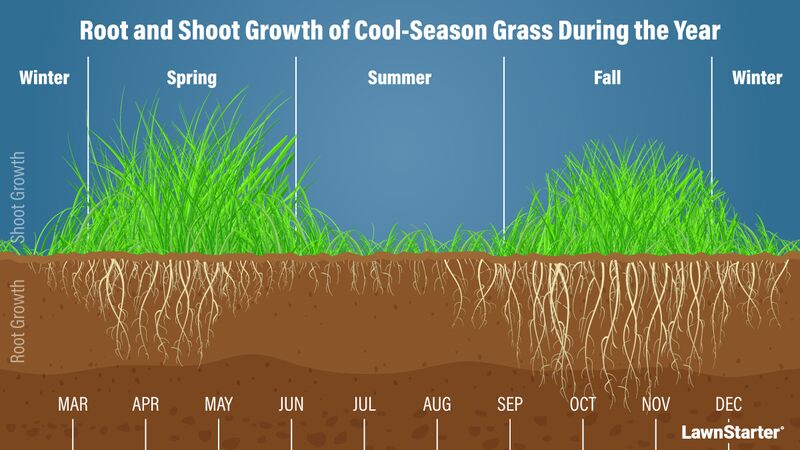
- Fine fescue: 1 inch per week
- Kentucky bluegrass: 1 inch per week
- Perennial ryegrass: 1 inch per week
- Tall fescue: 1 inch per week
| Drought tolerance of common types of grass | ||
|---|---|---|
| Warm-season grasses | Cool-season grasses | |
| Excellent | Buffalograss | Wheatgrass |
| Good | Bermudagrass, Zoysia japonica, Seashore paspalum | Tall fescue |
| Fair | St. Augustinegrass, Centipedegrass, Bahiagrass | Kentucky bluegrass |
| Poor | Zoysia matrella | Bentgrass, rough bluegrass, perennial ryegrass |
| Sources: Texas A&M University Extension Service, Cornell University Sports Field Management | ||
What is Your Local Climate?
Lastly, considering how your local weather affects soil moisture is critical.
Temperature
- Hot and Dry Climates: Water evaporates more quickly from the soil surface in regions with high temperatures and low humidity. Lawns in hot and dry climates may require more frequent watering to prevent drought stress and maintain healthy grass.
- Cooler Climates: In cooler climates, evaporation rates are generally lower. Lawns may need less frequent watering, especially during periods of lower temperatures.
Humidity
- Low Humidity: Low humidity increases evaporation rates, making the soil dry out faster. In arid or semi-arid climates with low humidity, lawns may need more frequent watering to compensate for the rapid moisture loss.
- High Humidity: Higher humidity levels slow down evaporation. Lawns in humid climates may require less frequent watering compared to arid regions.
Precipitation
Lawns in regions with consistent rainfall typically require less supplemental irrigation, while those in drier areas may need more frequent watering to compensate for the lack of rain.
Wind
Wind increases evaporation rates and can dry out the soil more quickly. In windy climates, lawns may need more frequent watering to offset the wind’s drying effects.
Conducting a Lawn Sprinkler Audit
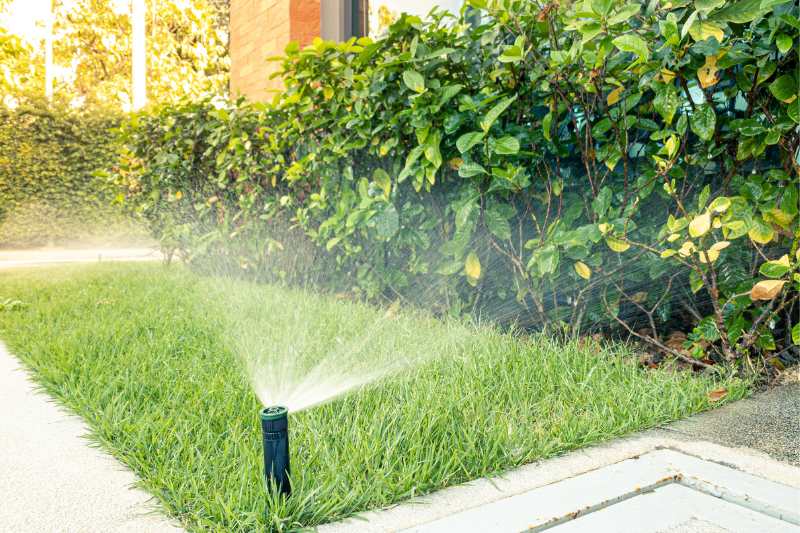
Before you look in-depth at how your sprinkler system works, the first thing to do is go outside and watch it while it’s running.
- Look for leaking, cracked, or clogged sprinkler heads. Replace damaged ones and try to unclog the ones that are blocked.
- Make sure your heads aren’t watering hardscapes like driveways, patios, and walkways. You want to avoid as much runoff as possible.
- Evaluate your spray patterns and adjust the heads until they distribute a relatively even amount of water and the entire lawn is getting moisture.
Now, you can move on to the sprinkler audit.
When irrigating your lawn, the goal is to break up your grass’ watering needs into two or three irrigating events throughout the week.
Each time you water, you’ll give your lawn a third to a half inch of water. This amount of water should soak loamy or silt soil to a depth of about 6 to 8 inches and will ensure the entire root system has access to moisture.
Here is how you can determine how much you’re watering at each event and how to adjust your sprinkler system timing to achieve that 6-inch depth.
- Place cups or cans at various spots around your lawn. Shallow-sided cans, such as tuna or cat food cans or milk cartons with their tops cut off, work well for this test. There are specialized “catch cans” designed for the job that are available online from some county extension offices or water utilities.
- Water for a half hour.
- Measure the water in each collection device or can and average them.
- Take a soil probe or a spade and note how deeply the lawn was watered. The watering depth is where the soil goes from a darker shade to a lighter color.
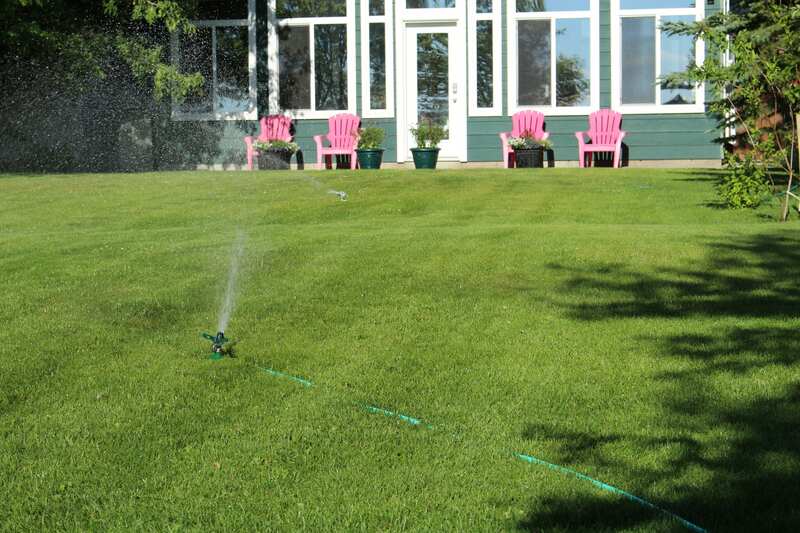
You should be able to figure out a desired watering time from the two numbers — the average amount of water and the depth of saturation.
For example, if twenty minutes of watering filled your cans to an average of 0.25 inches and moistened the soil to 3 inches, you know you’ll need to water for 40 minutes to get 0.5 inches of water to move 6 inches into the soil. At this rate, plan on watering twice a week to give your turf an inch of water weekly.
Keep in mind that sandy soils absorb water much quicker, and the water percolates rapidly through the soil.
If you’ve watered for 20 minutes to get 0.25 inches of water, you may see water to a depth of 6 inches in sandy soil. In that case, plan on watering for about 25 minutes three times a week. This will give your grass a third of an inch of water each time and wet the soil about 8 inches.
Pro Tip: If you have a drip irrigation system, this is a great time to check it. Some wear and tear may call for repair or replacement of parts. This also would be a good time to flush out the system, as the number one problem with drip systems is an accumulation of dirt that causes clogs.
Water Utilities Offering Free Sprinkler Audits
Your local water utility has a vested interest in preserving water — especially in arid areas or places where the supply is limited, and water conservation is crucial — so many public and private services offer sprinkler evaluations at no or low cost.
Free programs are offered in many cities and counties across the United States, including:
- In California: Montclair, Santa Clara County, San Diego
- In Colorado: A consortium of 30 water districts, including those serving Denver, Boulder, and Fort Collins
- In Florida: Orlando, communities in the Southwest Florida Water Management District
- In Oregon: Bend
- In Texas: Arlington, Austin, Dallas, Fort Worth, Southlake, Sugar Land
- In Utah: Counties around and including Salt Lake
FAQs About a Lawn Sprinkler Audit
What type of lawn sprinkler is the most efficient?
When comparing above-ground sprinklers to an in-ground sprinkler system, the in-ground system is typically more efficient. Its efficiency is due to its design and irrigation controller, which ensures the system only runs for a designated amount of time on specific days. Most of us can probably admit we’ve turned a sprinkler on and forgot about it.
Gear-drive rotors are the most efficient of the different types of sprinkler heads used in an in-ground system. They deliver a single stream of water less prone to evaporation than fixed spray heads.
How many collection cans should I use when conducting a water audit?
The University of Minnesota Extension recommends using 20 catch devices per zone to give you an accurate estimation. New Mexico State University recommends 24. For smaller zones, you can use less and more in larger zones. Regardless, ensure the grass is well-covered and the cans are evenly spaced.
How long does it take to perform a sprinkler system audit?
The time needed to complete an audit depends on the size of your yard and how many sprinkler zones it has. Expect to spend approximately 30 minutes per zone.
Need Some Professional Help?
Your sprinkler system shouldn’t be an intimidating part of your landscape. One of the best things you can do to promote a healthy lawn is to run a lawn sprinkler audit periodically to ensure you’re watering efficiently.
But we get it. Sometimes, you’re short on time, and other times, you simply don’t want to take on projects like this, which is why we’re here! If you need help making sure your irrigation system is running its best for the growing season, reach out to us at LawnStarter. We’ll connect you with local irrigation specialists who will audit your system and perform any needed maintenance.
Main Image Credit: welcomia / Canva Pro / License